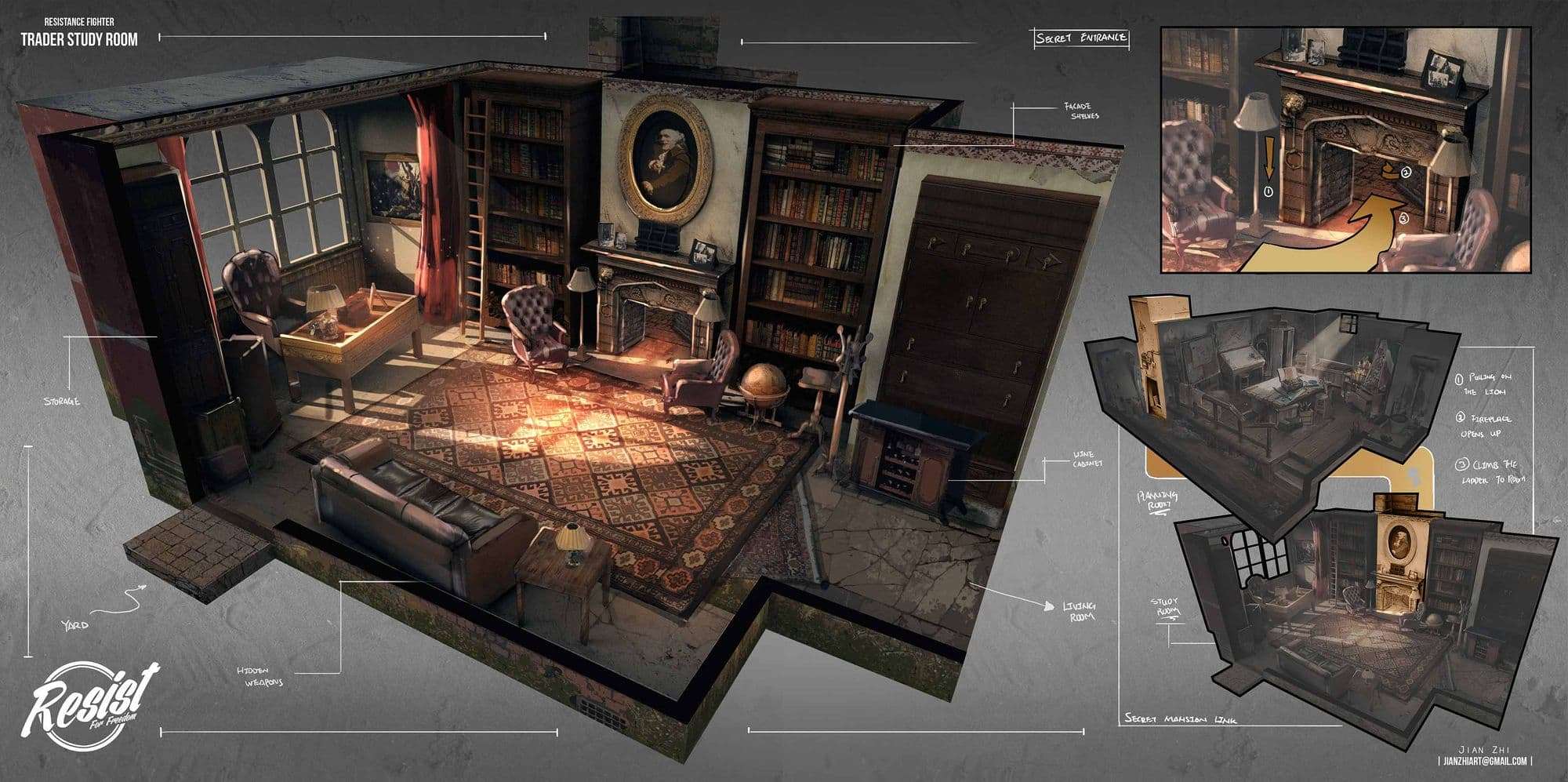A visual effects artist uses computer software to create animation and special effects to enhance film with digital elements that look realistic, but are impractical, dangerous, expensive, or impossible to film.
Visual Effects Artist Duties and Responsibilities
Visual effects artists are usually responsible for these tasks:
- Developing storyboards that show how and when visual effects are necessary
- Using software to create characters and visual elements for movies, TV shows, and other productions
- Creating mockups for directors and film editors to review
- Collaborating with directors and other artists to understand the overall vision
- Managing teams of VFX artists
- Overseeing visual effects projects
- Serving as liaisons with the production crew
Skills to develop:
- Drawing
- Visual Aesthetics
- Composition and Light
- Photography
- Mechanics and Movement
- Sculpture and Anatomy
The First Visual Effect
In the film industry, most people believe that director Alfred Clark created the first visual effect in the late 19th century when he used a dummy to stand in for an actor during a beheading scene.
Key VFX Roles and Departments
Animation
This department animates characters, objects, and scenes.
Art
The art department turns the director’s vision into visual concepts.

Assets
Modeling artists create visual assets to stand in for real objects.

Scene from “Deadpool”
Compositing
These artists layer all VFX elements.

Scene from “Avengers: Endgame”
FX Simulation
FX artists simulate real elements like fire and water using particle and fluid systems.
Lighting
These artists apply all digital lighting effects to the scene with virtual lighting to mimic the environment lights.
Matchmove
This department is responsible for motion tracking using a virtual camera that moves like the camera in the footage.
Matte Paint
These artists digitally paint scenes that are impossible to create in real lif
Pre-Visualization
Pre-visualization artists develop the rough draft of any visual effects.
Production
These professionals oversee the entire VFX process overseeing teams, budgets, and schedules.
Research and Development
This department creates new tools and software for visual effects.
Rotoscoping
These artists remove elements from scenes.
Choosing a Career Path: How Do You Become a Visual Effects Artist?
This career path generally requires a combination of education, experience, and skills.
Visual Effects Artist Education and Training Requirements: Schooling and Degrees
Most visual effects artists have a four-year degree in animation, multimedia, or visual art. Consider seeking out an internship at a film studio or an entry-level VFX job to get a foothold in the industry.
Additional Learning and Development: How Do I Start Learning Visual Effects?
If you want to become a visual effects artist, you’ll need to improve your VFX skills continually so you can stay on top of the latest technology and trends.
Self-Taught vs. University: Which Is Better?
If you opt to teach yourself, you can save money and set your own pace. If you enroll at a university, you may have more motivation and better access to professionals and networking opportunities.
Important Questions to Ask an Art School Before You Give Them Money
Before enrolling, ask these questions:
- How many teachers work in the industry?
- How many graduates find work in the industry?
- Why is your curriculum the best?
Top Visual Effects Schools and Online Programs
Consider one of these top VFX programs:
- Animation Mentor
- ArtFX
- CG Master Academy
- CG Spectrum
- Filmakademie Baden-Württemberg
- L’école Brassart
- Gnomon
- Institut Artline
- Lost Boys Studios
- Nashville Film Institute
- PIXL VISN
- Pluralsight
- Ravensbourne
- Think Tank Training Centre
- Vancouver Film School
Tools of the Trade: What Software Do Visual Effects Artists Use?
Visual effects artists often use paid software programs like:
- 3D Equilizer
- Adobe Allegorithmic Substance Designer
- Adobe After Effects
- Adobe Photoshop
- Autodesk Maya
- Foundry Mari
- Foundry Modo
- Pixar’s RenderMan
- Pixologic Zbrush
- SideFX Houdini
- Unity
- Unreal Engine
VFX artists can also benefit from free software like:
In this role, you may also need to know programming languages like C++ and Python.
Related Digital Arts Careers
You can also consider related careers like:
- Computer animator
- Multimedia designer
- Video game designer
- 3D modeler
Where Do Visual Effects Artists Work?
Most visual effects artists are freelancers, which means they work for multiple clients. Others work for film studios or design companies.
Scene from “Avengers: Infinity War”
Top Companies That Employ Visual Effects Artists
Consider looking for job openings at one of these top companies:
- Cinesite
- Double Negative
- Framestore
- Industrial Light and Magic
- Moving Picture Company
- Netflix
- Pixar
- Weta Digital
Navigating the Work Environment
Working as a visual effects artist usually requires spending a lot of time in front of a computer screen. Some VFX artists work from 9 a.m. to 5 p.m., while others work overnight to keep the team’s workflow moving along smoothly.
Visual Effects Artist Resume Help
Since most visual effects artists work as freelancers, it’s essential to have a great resume and portfolio to share with potential employers. Check out sample visual effects artists resumes to get inspired.
Helpful Organizations, Societies, and Agencies
Joining a union or professional network can be a great way to advance your career and get support. Consider joining organizations like:
Essential Reading for Visual Effects Artists
To learn the basics, check out these VFX resources:
- Acting for Animators
- Anatomy for 3D Artists: The Essential Guide for CG Professionals
- The Art and Science of Digital Compositing
- The Digital Matte Painting Handbook
- The Filmmaker’s Guide to Visual Effects
- Industrial Light and Magic: The Art of Innovation
- Masters of FX
- Matchmoving: The Invisible Art of Camera Tracking
- The VES Handbook of Visual Effects
Essential Communities and Blogs for VFX Artists
To stay on top of the industry, join these communities:
Visual Effects Artist Salary and Job Outlook
If you’re considering a visual effects artist career, it’s important to know what to expect in terms of earning potential and job outlook.
Salary: How Much Money Can I Make in Visual Effects?
According to the U.S. Bureau of Labor Statistics, the average annual salary for visual effects artists was $75,270 in 2019. The top 10% of workers in this field made over $140,000 per year, while the lowest 10% earned less than $40,000 per year.
Job Outlook
The job market for visual effects artists is projected to grow by 4% from 2018 to 2028. The TV and film industries are likely to be the biggest employers for visual effects artists.
Making Dreams Reality: Checklist of Your Next Steps
To make your dream of becoming a VFX artist a reality, follow these steps:
- Learn the software and technical skills.
- Create a portfolio of your work.
- Read blogs, join communities, and network with industry professionals.
Ready to get your start as a visual effects artist in the film industry? Request a brochure from the Nashville Film Institute and learn more about NFI’s film production diploma program.












